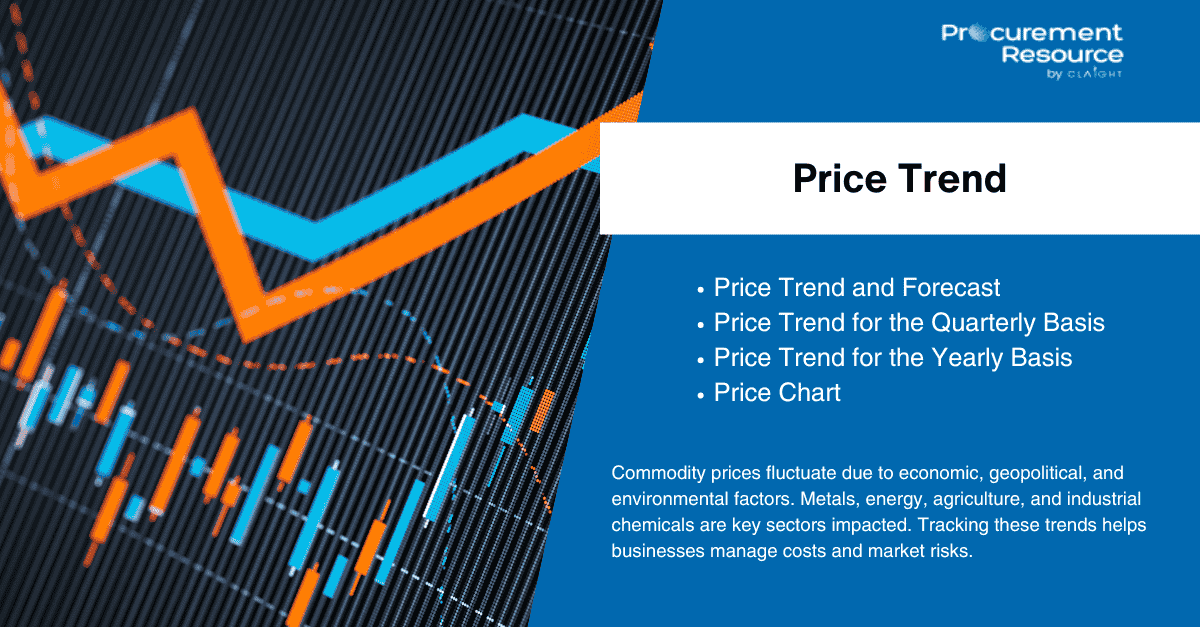Glycerin Price Chart: Market Analysis, Price Trends, Forecasts, and Regional Insights

Glycerin, also known as glycerol, is a versatile chemical compound used extensively across pharmaceuticals, personal care, food, and industrial applications. Its wide-ranging utility, from moisturizing agents to antifreeze formulations, makes it a key raw material in multiple value chains. With demand consistently rising across regions, understanding Glycerin price trends has become essential for procurement teams, manufacturers, and distributors alike. This article explores comprehensive insights into Glycerin prices, including historical data, forecasts, market updates, regional analysis, and access to an interactive Glycerin price chart.
What is Glycerin?
Glycerin (C₃H₈O₃) is a colorless, odorless, and viscous liquid that is either synthetically produced from petrochemicals or derived as a by-product from biodiesel manufacturing and soap production. Its hygroscopic and non-toxic nature makes it a critical ingredient in cosmetics, pharmaceuticals, food sweeteners, and various industrial products.
Two major sources define glycerin supply:
- Crude Glycerin: A by-product from biodiesel plants.
- Refined Glycerin: Further purified for use in food, cosmetics, and pharmaceutical applications.
Because of its dependence on biodiesel production and other upstream industries, glycerin’s price is subject to multiple market dynamics, including agricultural feedstock prices and global energy trends.
Latest Developments in the Glycerin Market
The glycerin market has experienced significant shifts driven by sustainability trends, regional production cycles, and feedstock fluctuations. As demand expands in personal care and pharmaceutical industries, glycerin producers are scaling up capacity and optimizing production costs.
Key Market Drivers:
- Increasing biodiesel production in Europe, Southeast Asia, and the Americas
- Growing demand in the personal care and pharmaceutical sectors
- Shift toward bio-based and natural ingredient sourcing
- Feedstock price volatility (palm oil, soybean oil, tallow, etc.)
Recent News:
- Southeast Asia, particularly Malaysia and Indonesia, has reported record biodiesel output, boosting crude glycerin supply.
- North America has seen a spike in glycerin demand from pharmaceutical formulators due to its use in COVID-19-related medications.
- EU green energy mandates are promoting biodiesel expansion, directly influencing glycerin supply growth.
Global Glycerin Price Overview
Glycerin prices vary significantly across regions based on feedstock availability, refinery capacity, quality grades, and trade flows. Markets have experienced both price spikes and corrections over the past several quarters.
Asia Pacific:
The region leads global glycerin supply, primarily through biodiesel by-products in Indonesia, Malaysia, and China. Crude glycerin production is high, but refined glycerin prices fluctuate depending on export logistics and refinery utilization rates.
Europe:
Europe imports a significant volume of crude glycerin for refining, making it sensitive to freight costs and biofuel regulations. Local demand from food and pharma industries keeps prices buoyant.
North America:
The U.S. and Canada are seeing steady glycerin demand growth. However, supply is influenced by biodiesel mandates and feedstock prices. Prices have stabilized due to consistent demand from chemical and pharma sectors.
Glycerin Price Chart and Historical Data
A [Glycerin price chart] offers clear visibility into historical trends, market peaks, and seasonal lows. This interactive tool allows users to analyze global and regional price fluctuations across various timeframes — monthly, quarterly, and annually.
Historical Trends:
- Glycerin prices remained stable, aligned with biodiesel production cycles.
- Significant price surges due to supply chain disruptions and feedstock inflation.
- Prices became more volatile, driven by logistic bottlenecks and inconsistent biodiesel outputs in key countries.
A historical price database enables procurement teams to plan ahead, avoid high-cost cycles, and build sourcing strategies based on past performance.
Glycerin Price Forecast and Market Outlook
Reliable price forecasting is critical for budgeting, contract negotiation, and inventory planning. Glycerin’s price outlook is shaped by upstream biodiesel trends, crude oil prices, and consumer demand in food and cosmetics.
Key Forecast Factors:
- Biodiesel output expansion in emerging markets
- Regulatory shifts in renewable fuel mandates
- Feedstock supply dynamics (palm oil, coconut oil, soybean oil)
- Global shipping and container availability
Leveraging market modeling tools like those provided by Procurement Resource, stakeholders can access data-driven projections based on seasonality, macroeconomic factors, and feedstock trends.
Market Outlook:
- Short-term prices are likely to fluctuate in response to palm oil availability.
- Mid-term forecasts indicate stability due to stronger refining capacities.
- Long-term prices may trend upward if biodiesel production expands globally.
Glycerin Market Insights and Supply Chain Analysis
Understanding the glycerin supply chain is essential to grasp price drivers and secure reliable sourcing.
Feedstock Impact:
- Vegetable oils: Palm, soybean, and coconut oils are primary sources.
- Animal fats: Tallow is another feedstock, especially in Europe and North America.
Changes in agricultural outputs due to weather, crop yields, or geopolitical disruptions can directly affect glycerin supply and cost.
End-Use Applications:
- Pharmaceuticals: Tablets, syrups, skin treatments
- Personal Care: Lotions, soaps, toothpaste, shampoos
- Food Industry: Humectant, sweetener, solvent
- Industrial: Antifreeze, lubricants, plasticizers
Rising consumer preference for natural and sustainable products is increasing glycerin’s relevance across multiple sectors.
Regional Insights & Breakdown
Southeast Asia:
The largest producer of crude glycerin due to dominant biodiesel industries in Indonesia and Malaysia. Supply availability is high but impacted by palm oil policies and export restrictions.
Europe:
Home to refined glycerin manufacturers, Europe relies on imports for crude glycerin feedstock. Environmental regulations and biodiesel blending mandates shape market dynamics.
North America:
With steady biodiesel growth and domestic soap production, North America is both a consumer and producer of glycerin. Prices remain moderate due to diversified sourcing.
Latin America:
Emerging biodiesel markets in Brazil and Argentina are boosting crude glycerin output. However, refining capacities remain limited.
Procurement Strategies for Glycerin Buyers
Navigating a volatile glycerin market requires strategic sourcing and expert guidance. Procurement professionals are advised to:
- Use Price Charts: Monitor real-time data using the Glycerin price chart to identify optimal purchase windows.
- Engage Multiple Suppliers: Diversify geographic sources to manage risk.
- Adopt Index-Based Contracts: Link glycerin prices to feedstock indices for flexibility.
- Work with Procurement Resource: This platform provides tailored pricing intelligence, market forecasts, and supply chain analytics.
Glycerin Price Database
Our extensive glycerin price database is a valuable tool for:
- Tracking long-term pricing trends
- Benchmarking across global regions
- Planning budget forecasts
- Identifying pricing opportunities and risks
Data is updated regularly and includes both crude and refined glycerin across various purity grades. The database is ideal for procurement teams, analysts, and market researchers.
Request for the Real Time Prices : https://www.procurementresource.com/resource-center/glycerin-price-trends/pricerequest
Contact Information
Company Name: Procurement Resource
Contact Person: Ashish Sharma (Sales Representative)
Email: sales@procurementresource.com
Location: 30 North Gould Street, Sheridan, WY 82801, USA
Phone:
UK: +44 7537171117
USA: +1 307 363 1045
Asia-Pacific (APAC): +91 1203185500
Connect With Us Online:
https://x.com/procurementres
https://www.linkedin.com/company/procurement-resource-official/
https://www.youtube.com/@procurementresource




